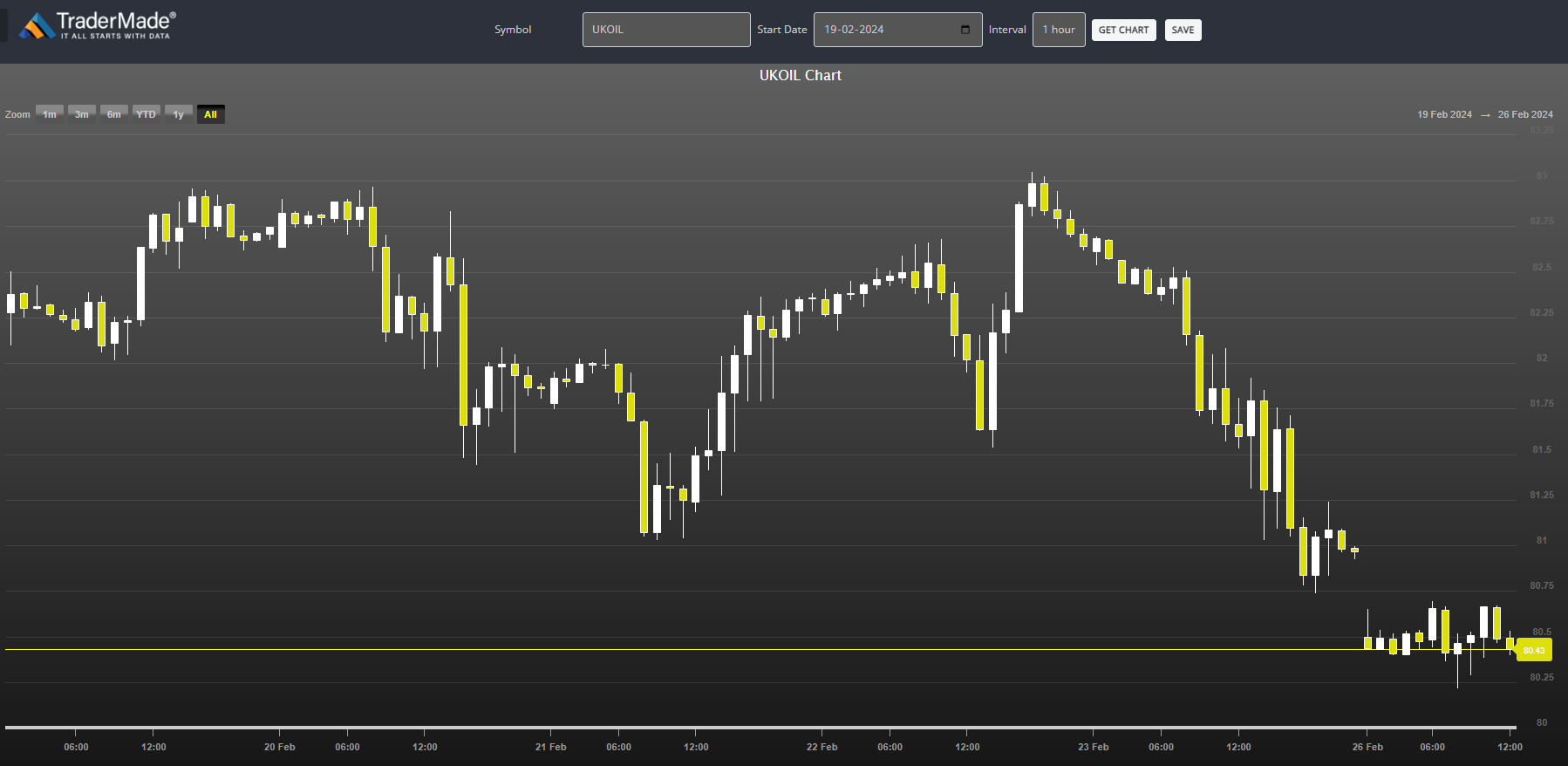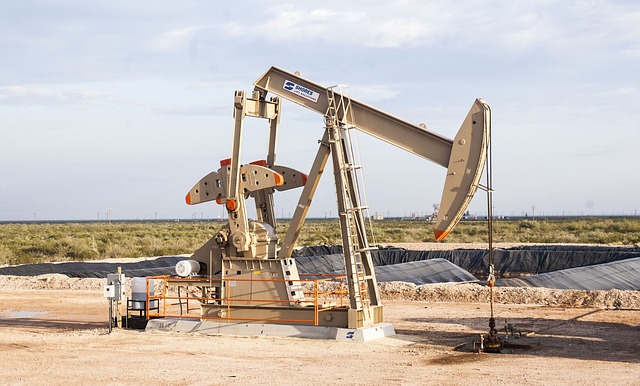
Crude Oil Extends Downward Slide
London: 26 February 2024 (TraderMade): Oil prices extended their downward slide on Monday, adding to losses recorded last week, as market concerns about higher-than-expected inflation cast doubt on the likelihood of imminent US interest rate cuts. This cautious outlook and ongoing geopolitical tensions paint a complex picture for the crude oil market.
Key takeaways
- Interest Rate Jitters Weigh on Oil.
- WTI Dips Near $76. Brent Follows Suit.
- Geopolitical Tensions Limited Impact.
- Goldman Sachs Raises Summer Peak Prediction.
Interest Rate Jitters Weigh on Oil
The possibility of delayed interest rate cuts aimed at curbing inflation has dampened growth prospects and, consequently, global fuel demand. This sentiment weighed heavily on crude oil prices.
A stronger US dollar, often due to higher interest rates, can make oil more expensive for buyers holding other currencies, further limiting demand.
Brent Crude Oil (UKOIL) Price Trajectory Over the Last Week (19 February - 26 February 2024)
Brent Crude Oil (UKOIL) prices experienced a downward trend over the past week, closing at $80.42 per barrel on 26 February 2024. The price movement represents a 2.32% decrease compared to the closing price of $82.75 on 19 February 2024.
Here's a breakdown of UKOIL's price movement throughout the week:
Examining the daily price movements, we can see that Brent Crude Oil (UKOIL) opened on 19 February at $82.28 and experienced some volatility throughout the week. Prices reached a high of $82.97 on 20 February but ultimately ended the week lower, closing at $80.42 on 26 February. The fluctuation represents a decrease of over $2 per barrel compared to the opening price.

While there were some fluctuations throughout the week, the overall trend was negative. Significant factors contributing to crude oil price decline over the last week:
- Concerns about delayed interest rate cuts: The possibility of delayed interest rate cuts in the US, aimed at curbing inflation, could dampen economic growth and, consequently, global fuel demand.
- Geopolitical tensions: Ongoing conflicts in the Middle East, such as the Israel-Hamas conflict, could disrupt oil supply chains and push prices higher. However, the lack of significant disruptions has limited the impact on prices.
Despite the short-term decline, it's important to note that this data only reflects a one-week snapshot. The long-term outlook for Brent Crude Oil remains uncertain. It mainly relies on various factors, including global economic conditions, geopolitical events, and supply and demand dynamics.
WTI Dips Near $76, and Brent Follows Suit
West Texas Intermediate (WTI) crude futures, a key benchmark for North American oil, fell below $76 per barrel, extending losses for the second consecutive session.
Brent crude futures, another primary benchmark for oil prices, also declined, dropping to around $81.23 per barrel.
Brent Crude (UKOIL) was at $80.485 a barrel, and WTI Crude (OIL)was $76.004 a barrel at about 12:15 PM GMT today.
Geopolitical Tensions: Limited Impact, But Unrest Persists
Despite ongoing conflicts in the Middle East, such as the Israel-Hamas conflict and attacks by Yemeni Houthis on ships in the Red Sea, significant disruptions to oil supply haven't materialized yet.
However, the situation remains fluid, and any escalation in these conflicts could disrupt supply chains and push prices higher.
Encouragingly, progress in ceasefire talks between Israel and Hamas has eased some immediate supply concerns.
Summer Peak Prediction: Cautious Optimism Amidst Short-Term Dip
While the current price dip reflects short-term concerns, some analysts remain optimistic about the long-term outlook.
Goldman Sachs analysts raised their summer peak price prediction for oil to $87 per barrel, citing potential supply constraints driven by factors like refinery maintenance and rising demand in the United States and India.
Summary
The oil market is navigating a complex landscape, with concerns about delayed interest rate cuts and ongoing geopolitical tensions acting as headwinds. However, a potential summer peak of $87 per barrel predicted by some analysts suggests cautious optimism for the long term.
The market will continue to monitor developments on the inflation and interest rate fronts and the evolving geopolitical situation in the Middle East for further direction.



